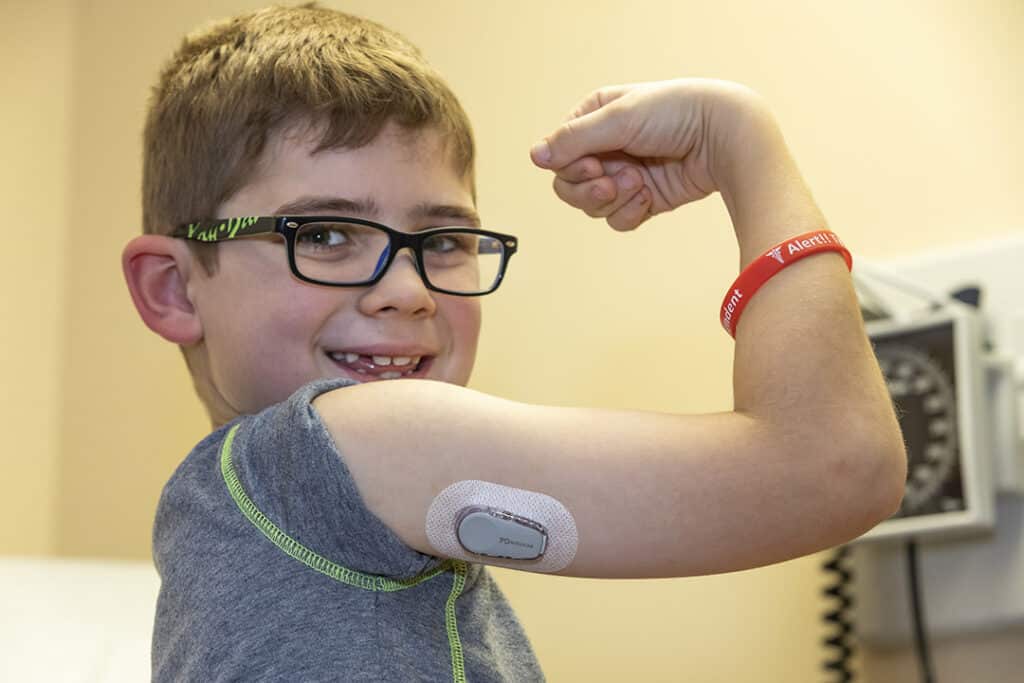Introduction
Recent research published in Diabetes Research and Clinical Practice sheds light on the connection between satisfaction with continuous glucose monitors (CGMs) and improved glycemic control in children and adolescents dealing with type 1 diabetes (T1D). This study offers valuable insights into how higher CGM satisfaction contributes to better glycemic outcomes, ultimately enhancing the quality of life for young patients.
The Significance of CGM Satisfaction
While previous research has demonstrated the positive influence of CGMs on blood glucose control, issues related to low patient satisfaction have been a persistent barrier to their long-term use. Challenges include frequent alarms and error alerts, the inconvenience of wearing these devices, calibration difficulties, and the time required for system setup. Abbott FreeStyle Libre 14 Days Must Read
The study authors noted, “Even with the best technology such as automatic insulin delivery systems, overall patient satisfaction is often unaltered and only in some cases improved.”
Please fill out this form to determine whether or not you or a friend are eligible for a CGM
Study Methodology
To investigate the influence of CGM satisfaction on glucose control in pediatric patients utilizing various treatment methods, a cross-sectional study was conducted. The research collected data from patients with type 1 diabetes who attended 14 pediatric diabetes clinics in Italy.
The study encompassed 210 patients aged 8 to 18 and their parents, all of whom completed the Remote Glucose Monitoring Satisfaction Questionnaire. This questionnaire gathered data on patient demographics, diabetes duration, sensor experience, CGM type, insulin treatment methods, daily insulin dosage, and incidents of severe hypoglycemia and diabetic ketoacidosis in the past year.
Key Findings
The majority of patients in the study used Dexcom G6 sensors, with 36.2% employing multiple daily injection systems, 27.6% utilizing sensor-augmented pumps, and 36.2% employing automatic insulin delivery systems. While BMI z-scores were similar across groups, patients using multiple daily injection systems and automatic insulin delivery systems had slightly higher daily insulin requirements.
Read Guide about Wegovy Dosage Guide: The Best Way For Weight Loss
Automatic insulin delivery systems were associated with higher time in the target range, lower time above the target range, and lower time below the target range. Patients using sensor-augmented pumps and automatic insulin delivery systems also had a higher frequency of annual telemedicine visits compared to those using multiple daily injection systems.
Scores from the Continuous Glucose Monitor Satisfaction Questionnaire indicated satisfaction levels higher than neutral for all three treatment modalities, with patients using automatic insulin delivery systems reporting the highest benefit. Patients achieving a time in range equal to or greater than 70% and a glycemia risk index of less than 40 reported the greatest benefits from CGM use.
Must Read About: Abbott and WeightWatchers A Game-Changing Diabetes Management App
Satisfaction Factors
The study revealed that three common issues associated with lower satisfaction were “shows more glitches and bugs than it should,” “leads to excessive discussions about blood sugar within the family,” It “significantly disrupts sporting events and other activities that take place outside.” On the other hand, the phrases “facilitates insulin adjustments,” “prevents low blood sugar events,” and “provides a sense of security” were associated with greater levels of satisfaction. security by warning about impending low blood sugar.”
Study Limitations
This study had certain limitations, including its cross-sectional design, variations in the CGM systems used by patients, and potential differences in cultural, socioeconomic, and healthcare system factors among patients, which may limit its applicability to the global pediatric diabetes patient population.
Conclusion
In conclusion, this research underscores the positive impact of CGM systems on glucose control among pediatric patients with T1D. It emphasizes that CGM satisfaction is a critical patient-reported outcome, and the perceived benefits of CGM usage are closely linked to increased time spent in the target glucose range and reduced glycemic risk.
While challenges persist, including barriers to real-world CGM use across different treatment modalities, the authors believe that new technologies, coupled with ongoing therapeutic education, have the potential to improve satisfaction and glycemic control in this patient population.


